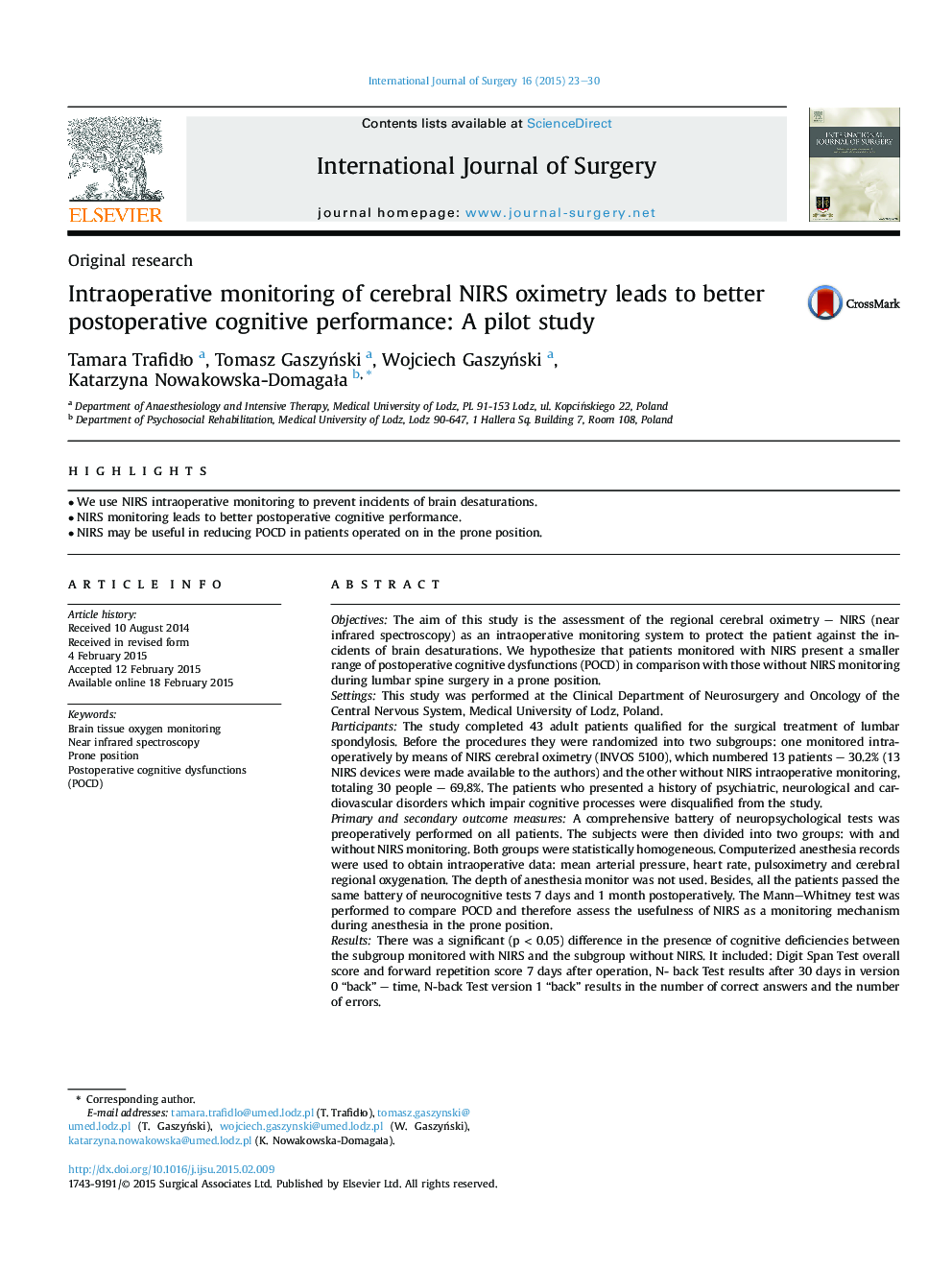| کد مقاله | کد نشریه | سال انتشار | مقاله انگلیسی | نسخه تمام متن |
|---|---|---|---|---|
| 4285993 | 1611978 | 2015 | 8 صفحه PDF | دانلود رایگان |

• We use NIRS intraoperative monitoring to prevent incidents of brain desaturations.
• NIRS monitoring leads to better postoperative cognitive performance.
• NIRS may be useful in reducing POCD in patients operated on in the prone position.
ObjectivesThe aim of this study is the assessment of the regional cerebral oximetry – NIRS (near infrared spectroscopy) as an intraoperative monitoring system to protect the patient against the incidents of brain desaturations. We hypothesize that patients monitored with NIRS present a smaller range of postoperative cognitive dysfunctions (POCD) in comparison with those without NIRS monitoring during lumbar spine surgery in a prone position.SettingsThis study was performed at the Clinical Department of Neurosurgery and Oncology of the Central Nervous System, Medical University of Lodz, Poland.ParticipantsThe study completed 43 adult patients qualified for the surgical treatment of lumbar spondylosis. Before the procedures they were randomized into two subgroups: one monitored intraoperatively by means of NIRS cerebral oximetry (INVOS 5100), which numbered 13 patients – 30.2% (13 NIRS devices were made available to the authors) and the other without NIRS intraoperative monitoring, totaling 30 people – 69.8%. The patients who presented a history of psychiatric, neurological and cardiovascular disorders which impair cognitive processes were disqualified from the study.Primary and secondary outcome measuresA comprehensive battery of neuropsychological tests was preoperatively performed on all patients. The subjects were then divided into two groups: with and without NIRS monitoring. Both groups were statistically homogeneous. Computerized anesthesia records were used to obtain intraoperative data: mean arterial pressure, heart rate, pulsoximetry and cerebral regional oxygenation. The depth of anesthesia monitor was not used. Besides, all the patients passed the same battery of neurocognitive tests 7 days and 1 month postoperatively. The Mann–Whitney test was performed to compare POCD and therefore assess the usefulness of NIRS as a monitoring mechanism during anesthesia in the prone position.ResultsThere was a significant (p < 0.05) difference in the presence of cognitive deficiencies between the subgroup monitored with NIRS and the subgroup without NIRS. It included: Digit Span Test overall score and forward repetition score 7 days after operation, N- back Test results after 30 days in version 0 “back” – time, N-back Test version 1 “back” results in the number of correct answers and the number of errors.ConclusionsNIRS cerebral oximetry may be useful in reducing postoperative cognitive complications in patients operated on in the prone positioning.Trial registrationRNN/556/08/KB – approval of the ethics committee at Medical University of Lodz, Poland.
Journal: International Journal of Surgery - Volume 16, Part A, April 2015, Pages 23–30